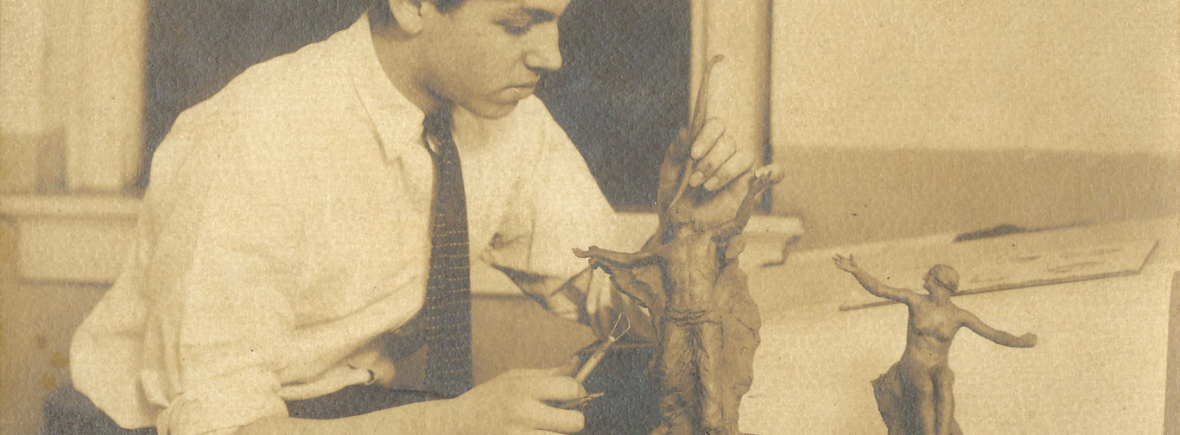The muralist, Auriel Bessemer, was an intense, energetic and spiritual man who earned his living by teaching art lessons, running a small art gallery on Dupont Circle and doing commissioned portraits and murals.
A stylized romanticism characterizes his art. His portraits won praise for their sensitivity, but the imagined figures in his murals seem repetitively similar, a bit stiff, with chiseled bodies and classic noses. His bold, carefully organized mural layouts are based on his fascination with classical proportions. Bessemer painted dozens of murals, for railroad cars, restaurants, churches, union halls and corporate offices.
Most have disappeared, but two murals survive in post offices in South Carolina and Mississippi. Doing commissioned secular murals, Bessemer lamented, was an unfortunate necessity. He much preferred to be inspired by his strongly held political and spiritual beliefs.
Passionately antifascist, Bessemer obsessed for years on a never-realized design for a large mural filled with several hundred figures and dramatically titled The Destruction, Regeneration, and Redemption of Man. He published a polemical poem called “The Slaughter-House of Man” condemning the rise of fascism in Europe. When World War II came Bessemer worked for the Army using his design skills.
An unusual family background helps explain his spiritual beliefs. He was raised in an eccentric religious commune in Florida, taught that we live on the inside surface of a gold-wrapped hollow globe. His eclectic spiritual education continued during heady early years as an apprentice muralist and art student in New York City in the 1920s. Late in his life, Bessemer moved to Colorado to join a New Age religious group. He illustrated the books of its charismatic leaders, who preached wisdom transmitted through them from “past masters” and believed in reincarnation.
